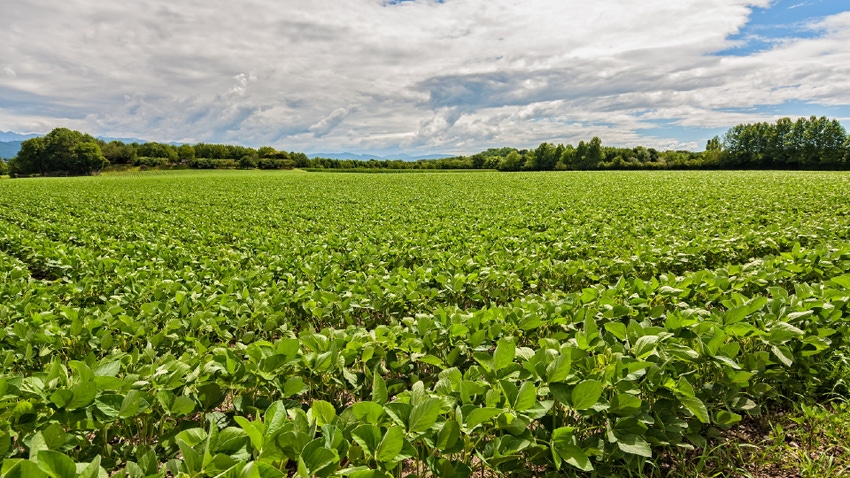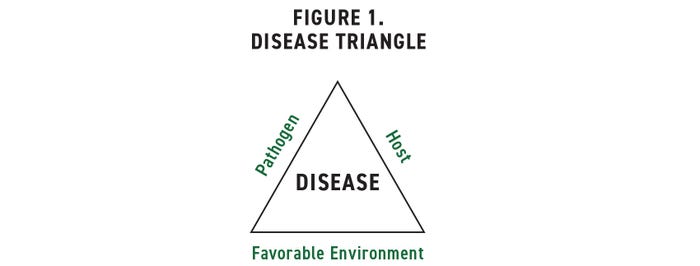July 7, 2023

Across the row crop growing regions of the US, diseases in the respective crop often define productivity for a grower. From a planning perspective, there is nothing more important than knowing what diseases are most important in each crop and what the risk is for a given crop on a field basis.
Over the past 20+ years, the crop protection industry has increased its development of fungicides for broad-spectrum prevention and control of fungal pathogens across all crops. This has often included the addition of two or more fungicide active ingredients to increase the activity on the target disease(s) and their persistence or residual activity. In some cases, the newer multiple-active ingredient products are combinations of proven, single-active ingredient products that have previously been used in agriculture.
As we enter the foliar disease management season in our crops, especially row crops, the availability of proven, branded fungicides could be limited in some markets to meet the demands that the growing season may dictate. With Tar Spot disease in corn alone, the proactive purchase of fungicides has increased substantially over the past few growing seasons.
What Are Options If First-Choice Fungicides Are Not Available at Application Time?
The answer will depend on several key attributes. First, we need to revisit the fundamentals of disease management. Referring to the Disease Triangle (Figure 1.), there are three factors that need to be in place to drive the use of fungicides for disease management^.
The three factors include:
A suitable host crop
A disease (viable pathogen) present
A conducive environment for the disease to infect and proliferate on the host crop

Photo submitted by Beck's Hybrids
Considering Tar Spot specifically and the impact of this disease on the crop, if it is very dry and there is a lack of dew or free water on the plant, the disease may not magnify itself. In 2022, across several of Beck’s Practical Farm Research (PFR)® locations, minimal disease pressure [Tar spot included] was observed due to a very dry and warm growing environment. Yield differences for fungicide treatments were lower than in previous years.
For growers managing crops with known diseases, a history of the disease on their farms and in their fields is the primary factor in planning for fungicide applications. When we look at “perennial” fungal pathogens such as Fusarium head blight in small grains, Cercospora leafspot in sugarbeets, or Sclerotinia white mold in soybeans, and now Tar Spot in corn, having a strategy for specific disease management will be important, regardless of the environmental conditions.
In Disease Management/Fungicide Selection, Keep the Following Aspects in Mind:
Although there is currently heightened focus on Tar Spot, confirm what disease(s) you are managing in your crops.
For example, Group 3 (DMI Trizoles) fungicides are often positioned as curative and have a specific activity once a disease is present. Alternatively, applications with Group 11 (QoL Strobilurins) fungicides can help create a protective barrier before plant diseases are present and are positioned as preventative. 1
Not all fungicides are created equal. When selecting a fungicide for your needs, choose an active ingredient that gives the best performance rating for the disease you are trying to control. Resources that provide independent ratings for the efficacy of active ingredients available for corn, soybeans, and small grains are available. 1
As a grower, can you combine two or more active ingredients to accomplish your disease management goal? Phytotoxicity can be reduced with selective tank-mixing. To avoid this risk, follow the label for watch-outs on what should and shouldn’t be mixed with a particular fungicide you are planning to apply.
Avoid products with the same MOA that won’t provide the diversification recommended. 2
Timing is critical for fungicide applications – for both plant health and targeted disease management. 3 For optimum fungicide activity, time foliar fungicide applications with cooler temperatures and the presence of dew on leaves, Fungicides need to get full coverage of the plant they’re being applied to, so use a higher carrier volume of water (15 to 20 GPA.)
In conclusion, the use of an efficacious fungicide for disease management can protect yields, and, in nearly all situations, the proper application of fungicides results in higher yields, higher bushel weights, better grain quality, and lower disease losses. Properly applied fungicides have also proven to be cost-effective and improve the returns per acre. For everything you need to know about fungicide applications, check out Episode 9 of The DIG – Fun With Fungicides.
^ Note: this strategy is different than would be employed for the use of fungicides for the preservation of plant health and general disease management.
1. Fungicide Efficacy: CropProtectionNetwork.org/publications/ fungicide-efficacy-for-control-of-corn-diseases
2. Fungicide MOAs: https://www.beckshybrids.com/resources/croptalk-newsletter/croptalk-getting-familiar-with-fungicides-and-their-moas-december-2019
3. PFR Proven™ Fungicides: https://www.beckshybrids.com/resources/pfr-proven-studies/pfr-proven-fungicide
Beck's - Farmers At Heart® - revolutionized the customer seed buying experience by remaining true to a foundation built on faith, family, and farming. Founded in 1937, Beck's appreciates the farmers who have helped them become the largest family-owned retail seed company and the third-largest seed brand in the United States. The Beck family is now in its fifth generation of family members who work in the business to honor God and help farmers succeed. The Beck family and team of employees help farmers achieve success from generation to generation through authentic customer experiences, product diversity, seed quality, and performance. With a home office located in Atlanta, Ind., Beck's serves farmers throughout the Midwest and Mid-South. For more information about Beck's Superior Hybrids, Inc., visit www.beckshybrids.com.
You May Also Like





